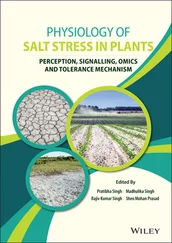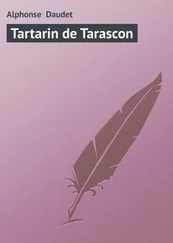Alphonse Candolle - Origin of Cultivated Plants
Здесь есть возможность читать онлайн «Alphonse Candolle - Origin of Cultivated Plants» — ознакомительный отрывок электронной книги совершенно бесплатно, а после прочтения отрывка купить полную версию. В некоторых случаях можно слушать аудио, скачать через торрент в формате fb2 и присутствует краткое содержание. Жанр: foreign_antique, foreign_prose, на английском языке. Описание произведения, (предисловие) а так же отзывы посетителей доступны на портале библиотеки ЛибКат.
- Название:Origin of Cultivated Plants
- Автор:
- Жанр:
- Год:неизвестен
- ISBN:нет данных
- Рейтинг книги:4 / 5. Голосов: 1
-
Избранное:Добавить в избранное
- Отзывы:
-
Ваша оценка:
- 80
- 1
- 2
- 3
- 4
- 5
Origin of Cultivated Plants: краткое содержание, описание и аннотация
Предлагаем к чтению аннотацию, описание, краткое содержание или предисловие (зависит от того, что написал сам автор книги «Origin of Cultivated Plants»). Если вы не нашли необходимую информацию о книге — напишите в комментариях, мы постараемся отыскать её.
Origin of Cultivated Plants — читать онлайн ознакомительный отрывок
Ниже представлен текст книги, разбитый по страницам. Система сохранения места последней прочитанной страницы, позволяет с удобством читать онлайн бесплатно книгу «Origin of Cultivated Plants», без необходимости каждый раз заново искать на чём Вы остановились. Поставьте закладку, и сможете в любой момент перейти на страницу, на которой закончили чтение.
Интервал:
Закладка:
I have the proof of this when I compare my present work with that which I composed by the same methods in 1855. For the species which I then studied, I have now more authorities and better authenticated facts, but my conclusions on the origin of each species have scarcely altered. As they were already based on a combination of methods, probabilities have usually become certainties, and I have not been led to conclusions absolutely contrary to those previously formed.
Archæological, philological, and botanical data become more and more numerous. By their means the history of cultivated plants is perfected, while the assertions of ancient authors lose instead of gaining in importance. From the discoveries of antiquaries and philologists, moderns are better acquainted than the Greeks with Chaldea and ancient Egypt. They can prove mistakes in Herodotus. Botanists on their side correct Theophrastus, Dioscorides, and Pliny from their knowledge of the flora of Greece and Italy, while the study of classical authors to which learned men have applied themselves for three centuries has already furnished all that it has to give. I cannot help smiling when, at the present day, savants repeat well-known Greek and Latin phrases, and draw from them what they call conclusions. It is trying to extract juice from a lemon which has already been repeatedly squeezed. We must say it frankly, the works which repeat and commentate on the ancient authors of Greece and Rome without giving the first place to botanical and archæological facts, are no longer on a level with the science of the day. Nevertheless, I could name several German works which have attained to the honour of a third edition. It would have been better to reprint the earlier publications of Fraas and Lenz, of Targioni and Heldreich, which have always given more weight to the modern data of botany, than to the vague descriptions of classic authors; that is to say, to facts than to words and phrases.
PART II.
On the Study of Species, considered as to their Origin, their early Cultivation, and the Principal Facts of their Diffusion. 25 25 A certain number of species whose origin is well known, such as the carrot, sorrel, etc., are mentioned only in the summary at the beginning of the last part, with an indication of the principal facts concerning them.
CHAPTER I.
PLANTS CULTIVATED FOR THEIR SUBTERRANEAN PARTS, SUCH AS ROOTS, TUBERCLES, OR BULBS. 26 26 Some species are cultivated sometimes for their roots and sometimes for their leaves or seeds. In other chapters will be found species cultivated sometimes for their leaves (as fodder) or for their seeds, etc. I have classed them according to their commonest use. The alphabetical index refers to the place assigned to each species.
Radish.— Raphanus sativus , Linnæus.
The radish is cultivated for what is called the root, which is, properly speaking, the lower part of the stem with the tap root. 27 27 See the young state of the plant when the part of the stem below the cotyledons is not yet swelled. Turpin gives a drawing of it in the Annales des Sciences Naturelles , series 1, vol xxi. pl. 5.
Every one knows how the size, shape, and colour of those organs which become fleshy vary according to the soil or the variety.
There is no doubt that the species is indigenous in the temperate regions of the old world; but, as it has been cultivated in gardens from the earliest historic times, from China and Japan to Europe, and as it sows itself frequently round cultivated plots, it is difficult to fix upon its starting-point.
Formerly Raphanus sativus was confounded with kindred species of the Mediterranean region, to which certain Greek names were attributed; but Gay, the botanist, who has done a good deal towards eliminating these analogous forms, 28 28 In A. de Candolle, Géogr. Bot. Raisonnée , p. 826.
considered R. sativus as a native of the East, perhaps of China. Linnæus also supposed this plant to be of Chinese origin, or at least that variety which is cultivated in China for the sake of extracting oil from the seeds. 29 29 Linnæus, Spec. Plant , p. 935.
Several floras of the south of Europe mention the species as subspontaneous or escaped from cultivation, never as spontaneous. Ledebour had seen a specimen found near Mount Ararat, had sown the seeds of it and verified the species. 30 30 Ledebour, Fl. Ross. , i. p. 225.
However, Boissier, 31 31 Boissier, Fl. Orient , i. p. 400.
in 1867, in his Eastern Flora , says that it is only subspontaneous in the cultivated parts of Anatolia, near Mersivan (according to Wied), in Palestine (on his own authority), in Armenia (according to Ledebour), and probably elsewhere, which agrees with the assertions found in European floras. 32 32 Buhse, Aufzählung Transcaucasien , p. 30.
Buhse names a locality, the Ssahend mountains, to the south of the Caucasus, which appears to be far enough from cultivation. The recent Flora of British India 33 33 Hooker, Flora of British India , i. p. 166.
and the earlier Flora of Cochin-China by Loureiro, mention the radish only as a cultivated species. Maximowicz saw it in a garden in the north-east of China. 34 34 Maximowicz, Primitiæ Floræ Amurensis , p. 47.
Thunberg speaks of it as a plant of general cultivation in Japan, and growing also by the side of the roads, 35 35 Thunberg, Fl. Jap. , p. 263.
but the latter fact is not repeated by modern authors, who are probably better informed. 36 36 Franchet and Savatier, Enum. Plant Jap. , i. p. 39.
Herodotus ( Hist. , 1. 2, c. 125) speaks of a radish which he calls surmaia , used by the builders of the pyramid of Cheops, according to an inscription upon the monument. Unger 37 37 Unger, Pflanzen des Alten Ægyptens , p. 51, figs. 24 and 29.
copied from Lepsius’ work two drawings from the temple of Karnak, of which the first, at any rate, appears to represent the radish.
From all this we gather, first, that the species spreads easily from cultivation in the west of Asia and the south of Europe, while it does not appear with certainty in the flora of Eastern Asia; and secondly, that in the regions south of the Caucasus it is found without any sign of culture, so that we are led to suppose that the plant is wild there. From these two reasons it appears to have come originally from Western Asia between Palestine, Anatolia, and the Caucasus, perhaps also from Greece; its cultivation spreading east and west from a very early period.
The common names support these hypotheses. In Europe they offer little interest when they refer to the quality of the root ( radis ), or to some comparison with the turnip ( ravanello in Italian, rabica in Spanish, etc.), but the ancient Greeks coined the special name raphanos (easily reared). The Italian word ramoraccio is derived from the Greek armoracia , which was used for R. sativus or some allied species. Modern interpreters have erroneously referred this name to Cochlearia Armoracia or horse-radish, which I shall come to presently. Semitic 38 38 In my manuscript dictionary of common names, drawn from the floras of thirty years ago.
languages have quite different names ( fugla in Hebrew, fuil , fidgel , figl , etc., in Arab.). In India, according to Roxburgh, 39 39 Roxburgh, Fl. Ind. , iii. p. 126.
the common name of a variety with an enormous root, as large sometimes as a man’s leg, is moola or moolee , in Sanskrit mooluka . Lastly, for Cochin-China, China, and Japan, authors give various names which differ very much one from the other. From this diversity a cultivation which ranged from Greece to Japan must be very ancient, but nothing can thence be concluded as to its original home as a spontaneous plant.
Интервал:
Закладка:
Похожие книги на «Origin of Cultivated Plants»
Представляем Вашему вниманию похожие книги на «Origin of Cultivated Plants» списком для выбора. Мы отобрали схожую по названию и смыслу литературу в надежде предоставить читателям больше вариантов отыскать новые, интересные, ещё непрочитанные произведения.
Обсуждение, отзывы о книге «Origin of Cultivated Plants» и просто собственные мнения читателей. Оставьте ваши комментарии, напишите, что Вы думаете о произведении, его смысле или главных героях. Укажите что конкретно понравилось, а что нет, и почему Вы так считаете.











